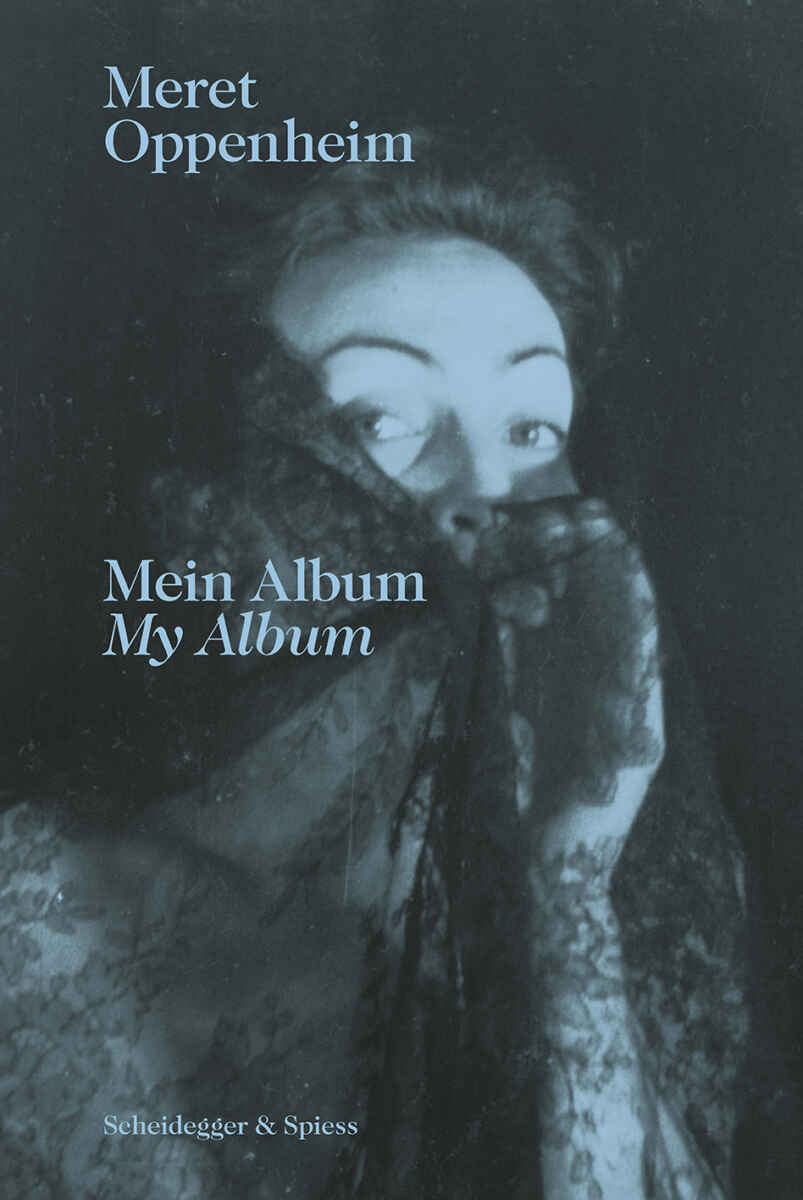
Edited by Lisa Wenger and Martina Corgnati, the autobiographical album From Childhood until 1943 and the handwritten My Biography (1970-71) by the artist herself are united in the new, bilingual (German/English) book Meret Oppenheim — Mein Album / My Album (Amazon.com, Amazon.co.uk, Amazon.fr, Amazon.de). It offers new insights since very little is known about the real person, who always remained secretive about herself and banned publication of any personal documents until twenty years after her death.
In 1958, Oppenheim put together an album that she titled Von der Kindheit bis 1943 (From Childhood to 1943). It has a dual identity of a diary and a work of art. It assembles in a collage photos, objects, notes, a collection of drawings, short texts as well as ideas and concepts for artworks. It offers very personal insights into Meret Oppenheim’s private life and thoughts in a kind of Gesamtkunstwerk.
From Childhood to 1943 was first published in 2013 to mark the hundredth anniversary of the artist under the title Meret Oppenheim — Worte nicht in giftige Buchstaben einwickeln (as the present book published by Scheidegger & Spiess). It contained a facsimile of the Album from Childhood until 1943.
This new book features the entire album in true-size color reproductions and, for the first time ever, translates the full text into English. The album is supplemented with a previously unpublished autobiographical text by Oppenheim, which she compiled in French in 1970–71.
In 1957, Yves Poupard-Lieussou initated an (unfinished) project for a bio-bibliographical history of Dada and Surrealism and asked Meret Oppenheim to send him a “detailed” biography — in fact just a few lines, almost completely devoid of personal facts (reprinted in Meret Oppenheim — Mein Album / My Album), in which she mentions that, during her last years in school, she made a lot of drawings in Indian ink, that she liked Alfred Kubin, the German Expressionist, the French Impressionists and that she read the poems of the Romantics.
Against her own wishes, her personal relationships continued to be made public. For instance in a publication about Max Ernst by Patrick Waldberg, Meret Oppenheim was falsely and unpleasantly portrayed as a ruthless femme fatale, according to Wenger and Corgnati.
The authors speculate that it was perhaps in response to this superficial denigration of her character by others, or simply to present a different perspective, that Meret Oppenheim drew up her own “anti-autobiography”, the Album, structured so that the narrative content prevailed over the visual one, and in a way to remind herself of her most important works, people, episodes and places.
According to Wenger and Corgnati, the Album is an anthology selected by the artist herself according to criteria of value and priority shared by few in the late 1950s, when Surrealism was not yet highly regarded. The Album ends in 1943 and, therefore, only highlights her early career. It is an œuvre d’art by itself, a livre d’artiste. It is a mine of information about scholars and art lovers which, however, should be taken with a pinch of salt since the artist got some dates and names wrong, perhaps on purpose, according to Wenger and Corgnati.
The introduction was written by Lisa Wenger (*1949), a niece of Meret Oppenheim and one of the keepers of the artist’s estate, who has transcribed thousands of letters, notes and other documents by Meret Oppenheim and her correspondents, and by Martina Corgnati (*1963), an art historian, curator and critic who teaches as a professor of history of art at Milan’s Brera Academy of Fine Art and has curated numerous exhibitions on avant-garde and neo avant-garde art.
In addition to the facsimile of the French, handwritten My Biography by Meret Oppenheim from 1971, with the German and English translations added, the two editors continued the data about Meret Oppenheim from 1971 until 1985, the year of her death.
My two favorites from the Album: a touching photo of Meret Oppenheim from 1916 when she was only 2.5 years old, and the wonderful childhood drawing “Angel. Mereti”, dated February 1, 1919.
As the title of the 1996/97 Guggenheim Museum exhibition suggested, Meret Oppenheim, that’s Beyond the Teacup (aka Pelztasse aka Le déjeuner en fourrure from 1936)!
Edited by Lisa Wenger and Martina Corgnati: Meret Oppenheim — Mein Album / My Album. Scheidegger & Spiess, bilingual German and English, paperback, Juli 2022, 324 pages with 179 color illustrations, 22 x 33 cm, ISBN 978-3-03942-093-3. Order the book from Amazon.com, Amazon.co.uk, Amazon.fr, Amazon.de.
If you read German, have a look at our article Meret Oppenheim regarding new books about the artist published in 2021.

For a better reading, quotations and partial quotations in this book review are not between quotation marks.
Book review added on August 2, 2022 at 14:59 Swiss time.